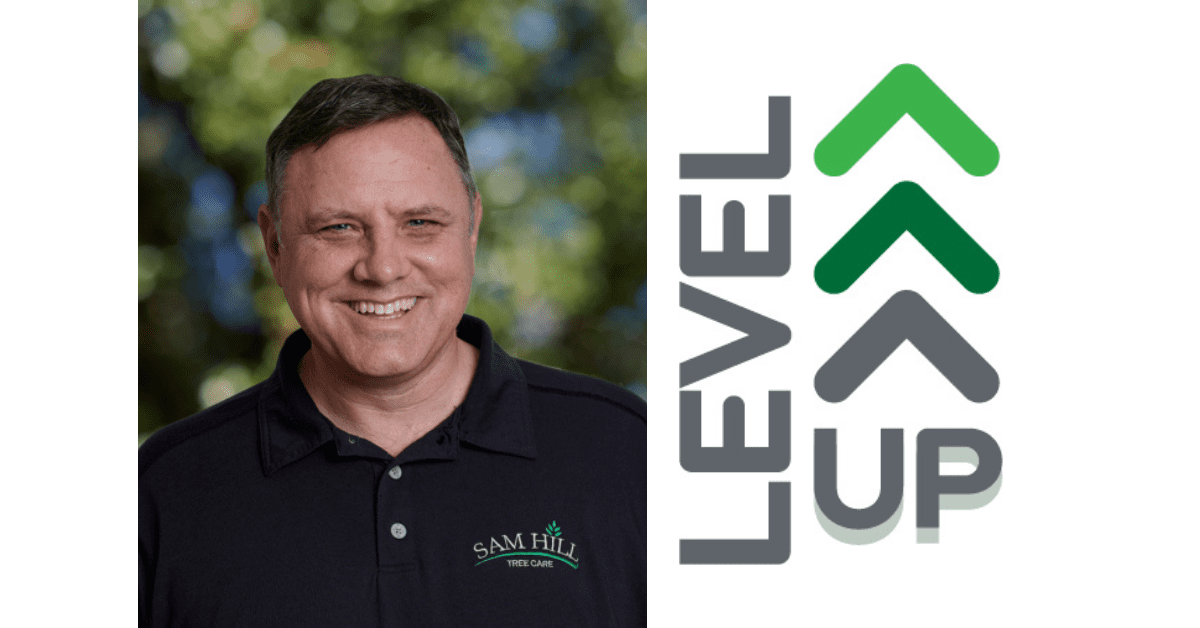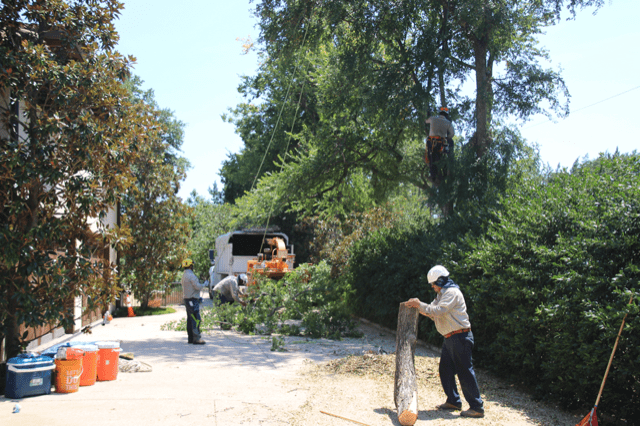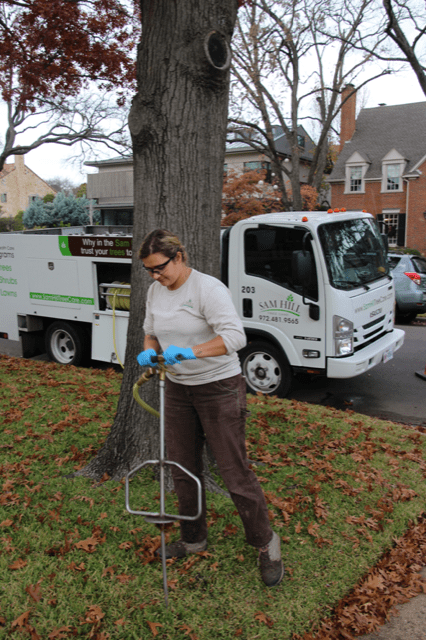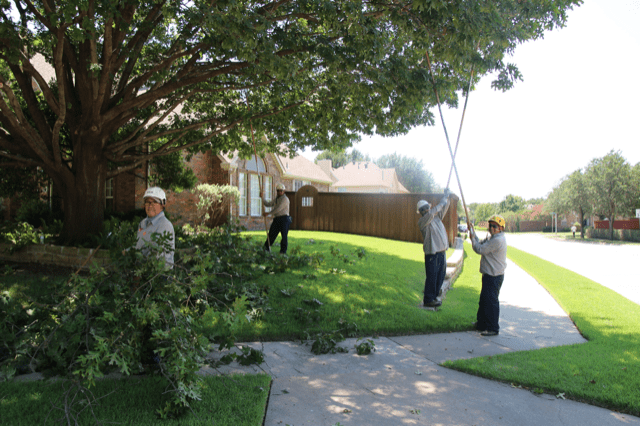
Our Level Up series shares the strategies that help landscape and lawn care companies get to the next level.
Growing up, Sam Hill didn’t realize he could make a career doing something outdoors aside from forestry. He pursued a chemistry major but was stuck in a basement lab with no windows, driving him to search for a different major.
It wasn’t until he was working at a bank that a friend mentioned they were taking some horticulture classes at a local community college that he found something that sparked his interest. Hill took some horticulture classes for a few years and loved it.
“Then the bank that I was working at was sold and leadership was going to change,” Hill says. “It wasn’t that I was worried about new leadership, but it seemed like a logical transition point.”
He worked as a chemical applicator for a commercial landscape company and quickly moved up through the business running that department before taking over the irrigation division. He held other leadership and sales positions at other landscape companies as well before becoming an account manager at a residential design, build and maintain company.
When the current tree care division manager resigned, the company approached Hill to take on the department. While he only had two days of training as an arborist, Hill leaned heavily on the crew leaders to learn how to estimate, sell and produce the work. He also reached out to experts at extensions and universities for advice.
“I would reach out to anyone, anywhere in the country,” Hill says. “I figured the worse they could do was not respond or blow me off, but I never had that experience. They loved sharing their knowledge. They invited me into their labs and showed me how to do their various lab procedures, taught me the theory, and let me practice on their samples. It was great!”
Hill didn’t plan on starting his own company, but after running the tree care division for the first year and growing it from $750,000 to $1,000,000 (33 percent), he was offered less than a 10 percent increase over his salary as an account manager. He had not received a raise when he became the department manager.
“My manager told me, ‘I was an unproven commodity,’” Hill says. “I walked away from that meeting knowing that I had proved it to myself. It took me about six months to research what I needed to do to start a business and go through the paperwork of establishing an LLC, etc. Then I turned in my notice and started it.”
Now Hill is president of Sam Hill Tree Care, based in Dallas, Texas. His company has an annual revenue of $3.8 million.
Branching Out
Since starting in 1998, Sam Hill Tree Care has been providing tree care and landscape plant health care services to high-end residential clients in Park Cities, Preston Hollow, Kessler/Stevens Parks, Lake Highlands, and a few other neighborhoods in Dallas.

“We rarely provide commercial services unless they require and value our level of expertise and service,” Hill says. “These would be situations such as sculpture gardens or where they absolutely have to do all they can to preserve a tree for public relations. I also have a few residential clients that really value trees and own commercial properties that will engage us for the care of some of their trees.”
Hill says their pruning is their most popular service and he takes pride in the proper pruning of the trees under their care as it is one of the best things that can be done for trees if done correctly. He says pruning can improve the structure of trees to help maintain them as long-term components of the landscape.
“Our team has been trained by internationally known pruning expert Dr. Ed Gilman,” Hill says. “We have engaged Dr. Gilman to provide in-house training to our crews and arborists on several occasions. In addition, I became involved with the committee that develops the ANSI A300 Standards for tree management several years ago. I was a member/participant of the subgroup that reviewed and updated Part 1 – Pruning through a couple of revisions. Now, I am Chair of the committee. I frequently teach about using the standards to improve pruning at various locations around the country.”
One service offering the company has moved away from is tree removal.
“We are usually involved in only the most complicated, technical removals,” Hill says. “In addition, we are putting more focus on services that require advanced levels of tree expertise, such as tree preservations on estate properties and advanced tree risk assessment. We have always been known for our expertise in plant health care, so clients are often referred to us by other professionals for plant health care. PHC is a significant part of our business.”
Like other companies, finding people has been a challenge. Moving away from labor-intensive services like tree removal to services requiring more education has helped them attract young professionals interested in plant health care, tree preservation and tree risk assessment.
“It isn’t easy,” Hill says. “Clients expect a tree company to do removals, so they are reluctant to bring in another company that specializes in removals. They would like for us to do everything. It is also difficult for us to let these tasks and revenues go, but we have to do it so we can focus our people resources on other tasks.”
Keys to Success
For Hill, he is looking to keep the company under 50 employees to avoid extra regulations. He doesn’t want to grow the company for the sake of growth. He credits their high standards, innovation and training for the company’s success over the years.
Hill is all about doing things right or they are not going to do it.
“Growing up, my family owned a cabinet-making business in a small town in northeast Texas,” Hill says. “The entire family working in the business. I can remember working with my dad and my older brother. If we couldn’t get it right, we would tear it out and start over. This didn’t mean we only took on easy tasks that could be easily performed correctly.”

Sam Hill Tree Care also works to find innovative solutions for the most challenging problems in the landscape. Hill says he’s constantly making mental notes of different techniques he sees used out in the field and then does in-depth research before implementing them.
“I watch when something new comes along,” Hill says. “Then I follow the scientific basis behind the technology and read the scientific journals. Next, I usually hire a technical consultant to provide the service for a client that might need it. These consultants are not competitors, and they are often affiliated with providing the training and technical support for the technology. Then I usually purchase the technology. We use the technology a lot without marketing it or making a big deal about it. Finally, when we are true experts with it, we will start to offer it to our clients.”
These technologies include Arbotom tomographs and Rinntech resistographs. Hill says technology is an art and science. While these instruments can produce results, a user can give bad advice if the results are not properly interpreted. Everyone at Sam Hill Tree Care receives extensive training from the leadership team, outside experts and outside coaching services.
“We have had training from experts in pruning, soil science, entomology, plant pathology, weed science, etc., teach our team,” Hill says. “We train on the latest climbing techniques, aerial rescue, electrical hazards, crane use in arboriculture, first aid and CPR, to name a few. In addition, we train in soft skills, so we are more effective communicators and are more effective at holding one another accountable. For several years, we have been utilizing training in Crucial Conversation and Crucial Accountability.”
One NALP tool that Hill says they’ve utilized for a couple decades is Frank Ross’s Pricing for the Green Industry.
“Understanding your costs and properly pricing your work is the key to a profitable business,” Hill says. “Without profit, you cannot pay your team well, provide benefits, provide extensive training, adopt new technology, etc.”
Hill also says NALP’s National Collegiate Landscape Competition has played a major role in his company’s growth. Hill himself competed as a student and now they participate in the career fair.
“It has been rewarding for us,” Hill says. “I found and hired our current operations manager, Andrew, during the career fair at Mississippi State. From this competition, we made connections with faculty at horticulture programs within our state. Those relationships have become a key component in our talent acquisition pipeline.”
Developing Professionals
Sam Hill Tree Care currently has 23 employees and Hill says they recruit most of their employees through referrals and college recruiting. They also have an internship program. He says about 33 percent of the time, these interns transition into full-time employees.

Hill says they retain their employees with benefits like excellent compensation, health, dental and vision insurance, 401(k) with employee match and competitive PTO. Yet he says one key retention factor is treating their team like the professionals they are.
Sam Hill Tree Care provides extensive training, meets regularly with employees to understand where they want to go and supports professional roles outside of the company, such as serving on the ANSI A300 committee, Trinity Backlands Urban Forestry committee, and student committee of ISA-Texas.
“One thing that I think has been effective is to suggest significantly bigger roles than they have even imagined,” Hill says. “I know they can handle them, but they don’t yet.”
Another reason employees say they stay with the company is because they feel safe. Safety is one of the company’s core values, along with professionalism, excellence and care.
“We are fanatical about safety,” Hill says. “If we cannot figure out a way to safely perform a job, we will suggest someone that can. Sadly, some of our team have had experiences in the past when they had an employer tell them to work in a very dangerous situation, such as an extremely hazardous tree or near electrical conductors without the proper training, equipment, etc.”
Hill says they also make a point to use mistakes as learning opportunities.
“We don’t berate anyone for making a mistake,” he says. “At the same time, we do try to help them understand the costs such as lost revenue, reputation damage, etc. If something goes wrong, we discuss what we are going to do differently in the future. I also ‘go first’ about my mistakes and expect my leadership to do the same. We have to normalize and make it safe to make, admit, and correct mistakes. Hiding mistakes will only lead to more and bigger mistakes in the future.”
Click here to read more Level Up stories.

